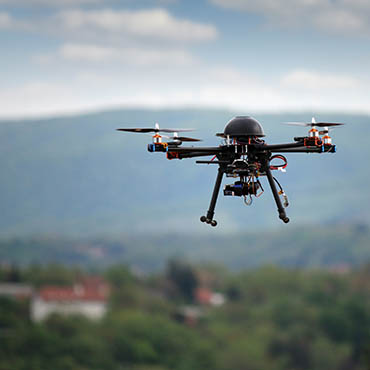Private-sector drones test friendly foreign skies

Amazon says the FAA's approach to regulating unmanned aerial systems is outdated.

While federal regulators advance their plans to integrate unmanned aerial systems into U.S. airspace, one groundbreaking company is testing the technology in other countries.
Paul Misener, Amazon's vice president of global public policy, told the Senate Commerce, Science and Transportation Aviation Subcommittee March 24 in written testimony that his company has already been flight testing a drone-borne delivery service in multiple locations overseas. That testing, he said, has needed "minimal aviation regulatory approval given the low risk presented by our small UAS designs; the R&D nature of our flight activity; and our relatively rural test sites."
The Federal Aviation Administration granted Amazon a certificate to test drones on March 20. The agency has granted about 50 certificates for companies to test the technology in the U.S.
Misener told the panel his company hasn't been required to wait more than one or two months to begin testing and it had been granted permission for operating a category of UAS, not individual types of vehicles, giving the company room to experiment and perfect designs without being required to continually obtain new approvals for specific vehicles.
Misener said Amazon had deemed the design approved by the FAA as now obsolete because of technical advances while awaiting approval. The company is now pursuing other designs. He urged the subcommittee to look at how European nations are more loosely categorizing new drone technology and perhaps spur U.S. regulators to change their ways.
Misener said Amazon's planned Prime Air service will deliver packages to customers in 30 minutes or less using small drones that fly below 500 feet. The service, he said, will use "sophisticated 'sense and avoid' technology, and extensive automation that will allow safe operation from up to 10 miles away, beyond the line of sight.
Federal Aviation Administration managers working to bring UAS into the U.S. National Air Space said they are moving with an eye to privacy, efficiency and safety.
Margaret Gilligan, associate administrator for aviation safety at FAA, said her agency is working to implement the FAA Modernization and Reform Act of 2012 that established the framework for integrating drones into the NAS and tasking her agency with integration of civil UAS into the system by October 2015. Gilligan said the agency has followed through with the intent of the act, completing milestones that will be the foundation of the integration.
She said some of the advanced technology Misener mentioned is difficult to manage in busy airspace. "We're in a different space than the Europeans. They have much less complexity in their airspace. We face challenges that they don't face," she said during the hearing.
The FAA proposed a rule last month that would allow small unmanned aircraft systems to operate for commercial purposes without first obtaining an airworthiness certificate or other exemption. "The proposal would cover many potential small UAS operations and would offer a flexible framework for the safe use of small unmanned aircraft, while accommodating future innovation in the industry," she said.
She added that testing is also underway at all six test sites set up for non-federal entities. Flights of unmanned aircraft have already been conducted at the sites, she said, including flights for research on agricultural and wildlife monitoring and on law enforcement and emergency services support.


